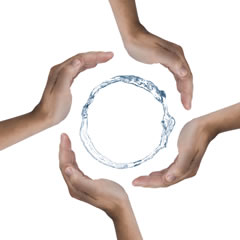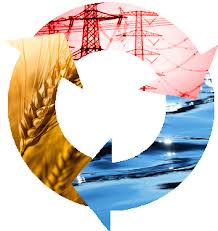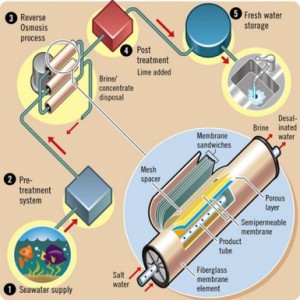Desalination as Adaptation: Energy Intensive, but Sometimes Necessary
By Suolang Dongcuo, MS’15, and Emily McCarthy, MS’15
In different areas around the globe, increased population growth and intensive use of water in both agriculture and industry sectors have exacerbated the problem of lack of access to clean water. The UN estimates that 800 million people will live under water stressed conditions by the year 2025. Water stress can be a result of insufficient rainfall, water storage, or clean water infrastructure. Most of the world’s aquifers and groundwater have become either depleted or polluted as a byproduct of satisfying our water needs.
The Role of Desalination: One of a Variety of Tools to Deal with Water Supply Issues
Two primary views on managing water demand and supply are to reduce our use of water and to recycle wastewater. Then another way to address problems of adequate water supply is to add additional clean water by desalination.

Besides solutions such as reduced water use and increased water recycling, desalination is probably the most well recognized method used to meet the increasing water demand. Desalination is a method where we mimic the natural water cycle’s processes of evaporation from oceans and subsequent condensation via a variety of technical processes to remove salt from brackish or salt waters producing clean water.
Numerous desalination plants have been built since the 1980s and construction of these types of plants is expected to increase. Saudi Arabia and the Arab Gulf States are the largest users of this technology, but desalination plants are seen on all continents except Antarctica. Desalination plants are globally producing 20 billion US gallons/day as of 2012.
Micha Tomkiewicz, a professor of physics at Brooklyn College, has a special interest in global water issues and climate change. He spoke with Bard Center for Environmental Policy as part of our National Climate Seminar series. He advocates for an intelligent use of desalination technology in regions where both the water is needed and the use of the technology is appropriate. He argues that we should integrate all three water saving methods with the natural water cycle.
Desalination: The Basics
In order to understand when the use of desalination technology is appropriate, an understanding of the basics is required. For example, desalination requires salty water so, if building a desalination plant, one should have access to ocean water without having to transport it

Another important component for desalination is access to reliable, inexpensive energy. This is because removing salt from salt water is an energy intensive process. The energy required for desalination can be reduced by increasing the efficiency of the processes, but the second law of thermodynamics shows us that there is a theoretical minimum amount of energy that it takes to separate water from a salt-water mixture (since solutions inherently want to mix, not separate).
The energy intensiveness of desalination brings to mind the water-energy-food nexus. It often requires water to create energy (water is often used as a coolant in energy production), as seen in the case of desalination it takes energy to desalinate water (or any other processing of water). Finally, food production requires large quantities of energy and water (Just food for thought).
There are two main types of desalination processes:
- Reverse osmosis membranes – Applies pressure to force clean water through a semipermeable membrane, while saltier water remains on the other side of the membrane.
- Thermal distillation – Applies heat to the salt water, brings it to a boil, and then cools the steam to capture clean water
The image below shows some of the components that a reverse osmosis desalination plant needs including the membrane, pressure vessel, storage, and treatment units.

Can Desalination Be Used To Address Environmental Equity
The challenge of supplying safe drinking water to all will require more thought. For example, water recycling and desalination require resources that most countries cannot afford. Water insecurity does not recognize borders and resulting crisis could cross borders as well. How can we get clean water to those that need it?
While the environmental justice movement, beginning in the 1980s, arose out of the need to address the fact that industrial air and water pollution were occurring more often in marginalized and low income neighborhoods, the environmental justice movement has more recently appeared on the drinking water regulatory scene.
We then ask, is intelligent use of desalination technology, integrated with reducing use and recycling, a way to incorporate environmental justice & equity? We believe it could be, but that it would require saliency in the political environment in order to be able to create policy that would help. We additionally think that using desalination as adaptation is a way to attempt to avert social vulnerability to violence over water stress.


To see a transcript of the talk and his answers to some BardCEP graduate students’ questions, please see Professor Tomkiewicz’s Blog:
To learn more about this and other National Climate Seminars, click here.
